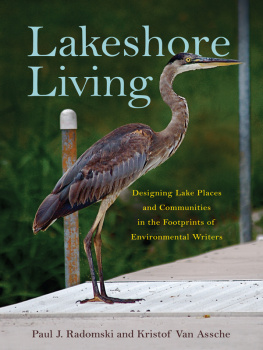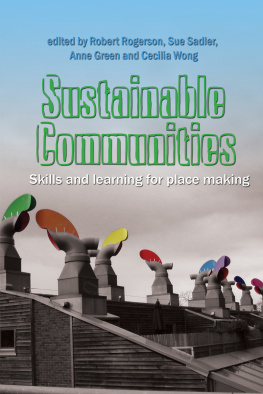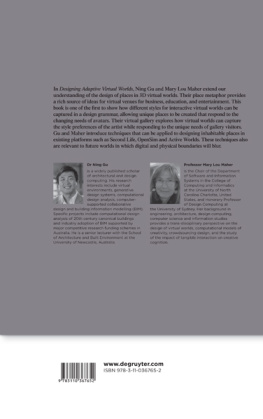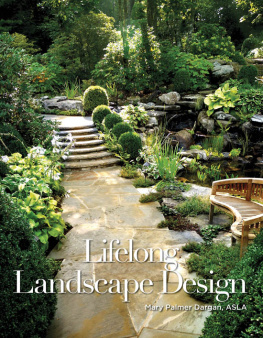Acknowledgments
PAUL RADOMSKI WOULD LIKE TO THANK HIS WIFE, HOLLIE RADOMSKI, FOR HER SUPPORT and encouragement while he spent evenings and weekends working on this book instead of out walking in the woods and enjoying her company. He would also like to thank Dave Wright and Dennis Schupp for their understanding and guidance, and Drs. Stan Szczytko, Irv Korth, and J. Baird Callicott for their teachings. Paul graciously thanks Kristof, who conceived the book and developed its initial foundation, for his support and friendship.
Kristof Van Assche would like to thank his parents for their patience.
We were very fortunate to have Kristin Carlson scrutinize the text, and we owe her a large debt of gratitude. We would like to thank the many people who shared their insights on lake and conservation issues with us along our journey of understanding, including, but not limited to Julie Aadland, Charles Anderson, Dennis Anderson, Adam Arvidson, Heather Baird, Larry Baker, Jim Ballenthin, Russ Barrett, Wayne Barstad, Romie Barwick, Ann Beaver, Tom Beaver, Jim Bence, Marian Bender, Angie Berg, Greg Berg, Lyn Bergquist, John Bilotta, Kristen Blann, Mary Blickenderfer, John Bogard, Gary Botzek, Joe Boyle, Tim Brastrup, Rick Bruesewitz, Jed Burkett, Andy Carlson, Phil Carlson, Ian Chisholm, Howard Christman, Yossi Cohen, Jean Coleman, Robb Collett, Steve Colvin, Carmen Converse, Sam Cook, Bill Darby, Harro de Jong, Dennis DeVries, Don Dewey, Randall Doneen, Gregg Downing, John Downing, Melissa Drake, Henry Drewes, Kate Drewry, Ryan Drum, Mike Duval, Harold Dziuk, Jeff Eibler, Bob Ekstrom, John Erickson, Linda Erickson-Eastwood, Joe Fellegy, Mike Findorff, Dave Friedl, David Fulton, Ed Fussy, Carol Gawlik, Dale Gawlik, Louie Gawlik, Ann Geisen, Jean Goad, Tim Goeman, Patty Gould-St. Aubin, Gerold Grant, Ken Grob, Jim Gustafson, Cindy Hagley, Nicole Hansel-Welch, Dr. Michael Hansen, Mark Hauck, Tom Heinrich, Steve Heiskary, Carrol Henderson, Don Hickman, John Hiebert, Steve Hirsch, John Hoenig, Mary Hoff, Pat Hogan, Dale Homuth, Mark Hove, Darrin Hoverson, Tom Hovey, Jeff Hrubes, Bill Huber, Phil Hunsicker, Dan Isermann, Pete Jacobson, Lucinda Johnson, Tom Jones, Larry Kallemeyn, Kendall Kamke, Anne Kapuscinski, Tim Kelly, Doug Kingsley, Beth Knudsen, Jim Kounkel, James Howard Kunstler, Jon Larsen, Kris Larson, Terry Lejcher, Jerry Lerom, Dave Leuthe, David Lick, Jim Lilenthal, Dale Lockwood, Dale Logsdon, Amy Loiselle, Dave Lucchesi, Chuck Marohn, Michael McDonough, Catherine McLynn, Jay Michels, Dave Milles, Jason Moeckel, Kent Montgomery, Gary Montz, Robert Morgan, Ron Morreim, Mike Mueller, Wayne Mueller, John Myers, Ransom Myers, Karen Myhre, Terry Neff, Darby Nelson, Tom Nelson, Ray Norrgard, Doug Norris, Jane Norris, Ben Oleson, Peder Otterson, Kevin Page, Bill Patnaude, Ron Payer, Mike Peloquin, Chris Pence, Don Pereira, Shawn Perich, Donna Perleberg, Ken Perry, Pam Perry, Dan Petrik, Lee Pfannmuller, Sharon Pfeifer, Ann Pierce, Rod Pierce, Phil Pister, John Postovit, Terry Quinn, Andy Radomski, Joan Radomski, Joseph Radomski, Noel Radomski, Rian Reed, Keith Reeves, John Ringle, Steve Roos, ChuckRose, Brian Ross, Jeff Schoenbauer, Kathy Schoenbauer, Jesse Schomberg, Russ Schultz, Johanna Schussler, Jennifer Shillcox, Molly Shodeen, Stephanie Simon, Terry Simon, Luke Skinner, Jack Skrypek, Doug Smith, Jeff Smyser, Byron Snowden, Paul Stegmeir, Brian Stenquist, Paul Stolen, Denise Stromme, John Sumption, Deb Swackhamer, Dan Swanson, Kimberly Thielen-Cremers, Lonnie Thomas, Bill Thorn, Dan Thul, Cindy Tomcko, Bob Valesano, Ray Valley, Henry Van Offelen, Bruce Vondracek, Jack Wallschlaeger, Judy Wallschlaeger, Chip Welling, John Wells, Reno Wells, Megan Wenker, Paula West, Julie Westerlund, David Willis, Bruce Wilson, Jack Wingate, Kevin Woizeschke, Allison Wolf, Jan Wolff, Rebecca Wooden, Tom Worth, Dave Zentner, and Molly Zins.
Quotations from A Sand County Almanac by Aldo Leopold (1966) came from Foreword, Marshland Elegy, Chihuahua and Sonora; Guacamaja, The Round River, The Community Concept, The Land Pyramid, The Outlook, and Wilderness for Science. They were used by permission of Oxford University Press, USA
Quotations from William H. Whyte came from the following books and are reprinted by permission of the Albert LaFarge Literary Agency, all rights reserved.
The Organization Man, by William H. Whyte. Originally published by Simon & Schuster in 1956. Copyright William H. Whyte.
The Last Landscape, by William H. Whyte. Originally published by Doubleday in 1968. Copyright William H. Whyte.
City: Rediscovering the Center, by William H. Whyte. Originally published by Doubleday in 1988. Copyright William H. Whyte.
A Time of War: Remembering Guadalcanal, a Battle Without Maps, by William H. Whyte. Originally published by Fordham University Press in 2000. Copyright William H. Whyte.
The Essential William H. Whyte, edited by Albert LaFarge. Originally published by Fordham University Press in 2000. Copyright William H. Whyte.
CHAPTER 1
Lake Parts
IT HAS BEEN ESTIMATED THAT THERE ARE ABOUT THREE MILLION LAKES GREATER than 25 acres (0.1 square kilometers) on the planet. These lakes are not distributed evenly over the world's landmasses. Earth's north temperate zone, including North America, is lake rich; Minnesota is called the land of ten thousand lakes, and Finland is called the land of thousands of lakes. Canada has over thirty-one thousand large lakes, and about 9 percent of the country is covered by freshwater. In North America, the highest densities of lakes are in the northeast and areas associated with glaciation. The continent's lakes are diverse in both size and character, ranging from small, fertile water bodies to the Great Lakes. People through the ages have been attracted to lakeshore living. We are attracted to lakes for food, home, and solace.
PHYSICAL FEATURES OF LAKES
Lakes are places. Lakes are made up of living and nonliving things. They are more than pools of water. Lakes are ecosystems that connect to other systems. Understanding lakes begins with understanding their basic elements. First, a lake includes a large amount of water, though what constitutes a large amount of water is arbitrary. The line between lakes and ponds is a fuzzy one. If you've spent time on Lake Superior, the world's largest lake by surface area, your perspective may be different than someone who has never experienced big water. Ponds are often characterized by shallow water, where light penetrates to the bottom, and they lack waves. Using this definition of a pond, Henry David Thoreau's Walden Pond, located in Concord, Massachusetts, is actually a lake. (Every New Englander might know that Walden Pond is a lake, but its name can confuse people from other areas.) Walden Pond is a deep (102 foot; 31 meter), small (61 acres; 25 hectares) lake formed by glaciers over ten thousand years ago. Most of the world's lakes are small; however, about 9 percent of the lakes account for about 60 percent of the total lake surface area.
Second, a lake's boundary is defined by its shoreline. Shorelines are dynamic places. Waves smooth out irregularities and deposit fine sediment in quiet areas, and water levels rise and fall with changes in the hydrologic cycle. At the open shore, trees and shrubs fight to reach the sun and to hold the soil at their roots. Lakes in a glacial outwash plain may have sand and soft sediment shorelines, whereas lakes situated in areas of glacial till often have rocky shorelines. The length of a lake's shoreline is dependent on the scale of measurement (measuring with a ruler produces an estimate larger than that measured with a yardstick), and based on themathematics of Benoit Mandlebrot, one could also say that the length of a lake's shoreline is nearly infinite. With regard to fish and wildlife habitat, the shoreline generally refers to the narrow band around the lake centered on the landwater interface.










